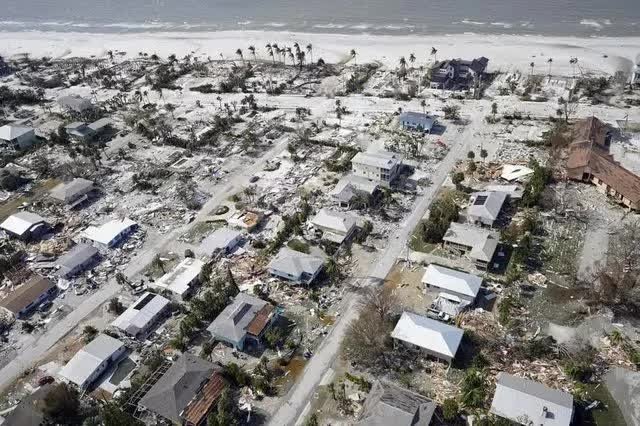
Defense against storms
Storm Ian is not only a powerful storm but also a prediction of what will happen in the future.
Engineers have long been thinking of ways to combat the threat of storms through building structures like levees and seawalls.
But for many communities, a simpler, more cost-effective solution may be to restore coral reefs.
Coral reefs are among many ecosystems, including mangroves and wetlands, that can protect humans.
The only problem is that the coral reefs are dying.
Along with disease and pollution, climate change – the same factor that makes storms more damaging – has wiped out half of the world’s coral reefs.
Ecological value of coral reefs
Across the United States, coral reefs protect the homes of more than 18,000 people and reduce flood damage by $1.80 each year, according to a recent analysis by the U.S. Geological Survey.
Florida, home to the third largest barrier reef in the world, also enjoys a large share of those benefits.
Research shows that coral reefs reduce the amount of energy in waves by an average of about 97%, similar to the way a speed bump slows down a car.

According to a study published last year in the journal Nature, even a small difference in reef height can make a big difference in risk to humans.
If coral reefs in the US lost 1 meter of height, that area in the US would expand by 104 square kilometers, putting about 51,000 more people at risk of flooding.
That’s also a big reason why the loss of coral reefs is so scary.
Build coral barriers with help from the world’s largest storm simulator
Experiment with corals
On a sunny afternoon in April, a group of American scientists began experimenting with the only machine in the world that can create an artificial level 5 storm.
The simulation system contains water about one meter high.

Then a graduate student turned on the machine.
According to Landolf Rhode-Barbarigos, a researcher at the University of Miami, when structures like honeycombs contain coral, they can reduce wave energy more effectively, in some cases by up to 95%.

Rhode-Barbarigos and other scientists plan to test several different structures, including honeycombs, in North Miami Beach.
Researchers at the University of Miami and elsewhere are also developing coral reefs that grow quickly and better withstand rising ocean temperatures, disease and predators.
According to USGS, the US spends about $500 million each year to limit coastal flooding and related threats.








